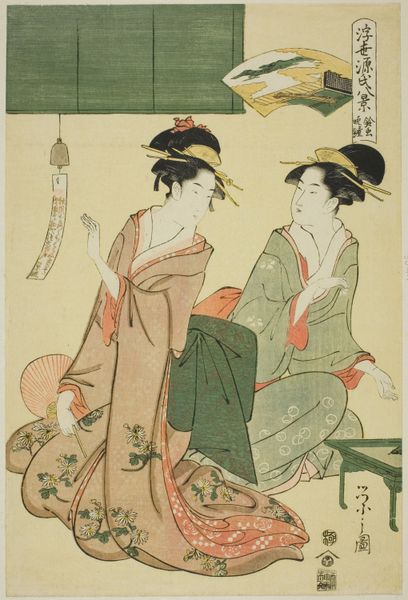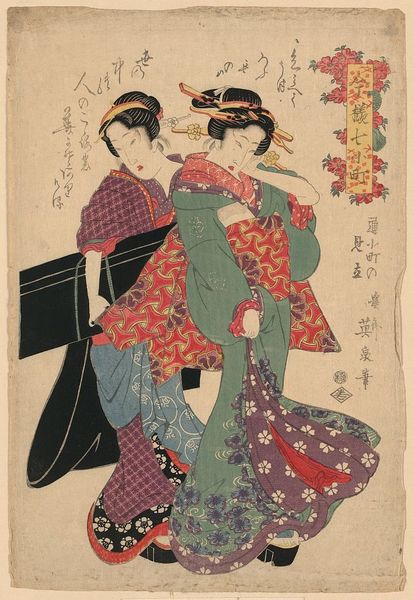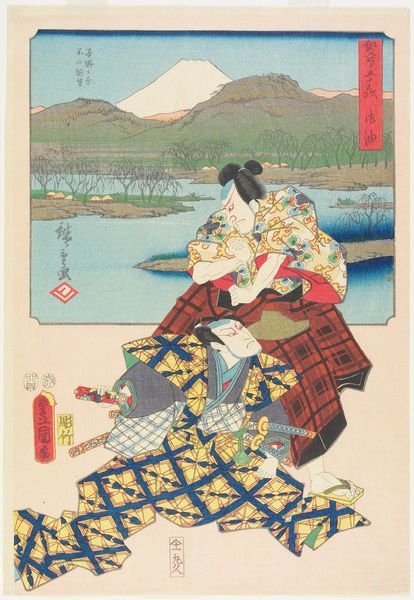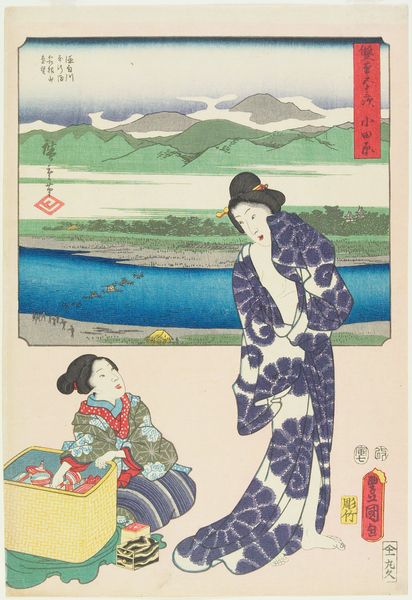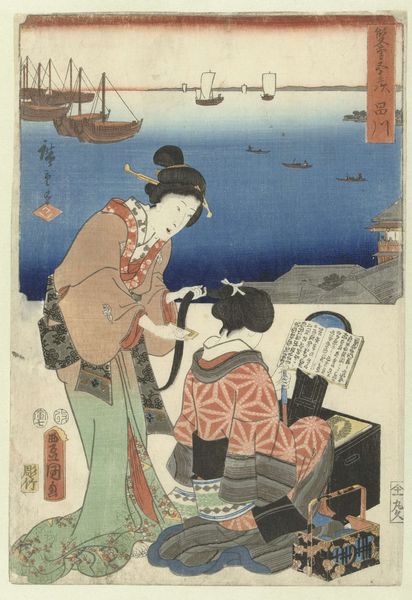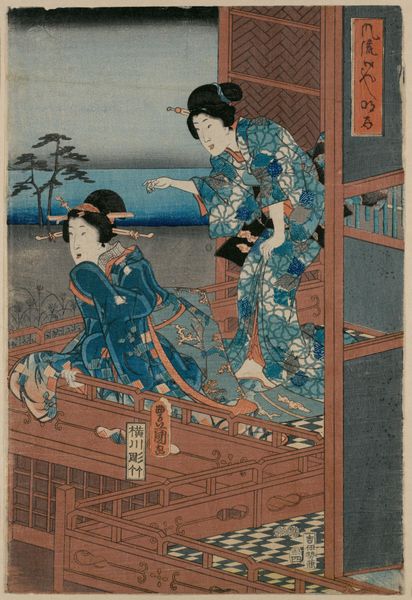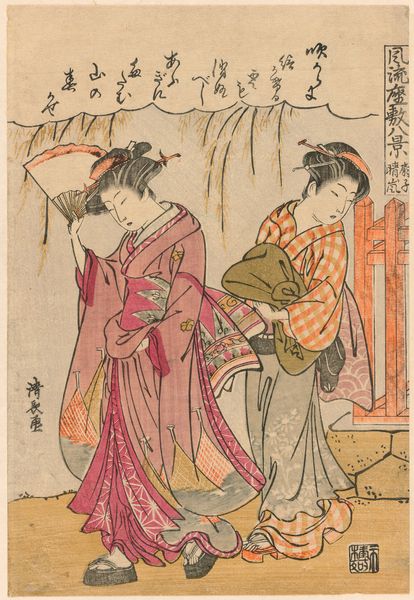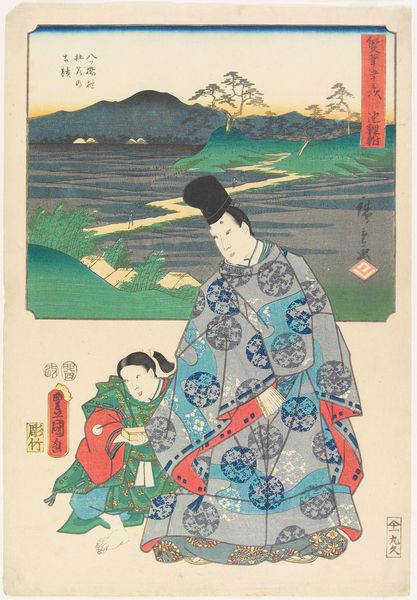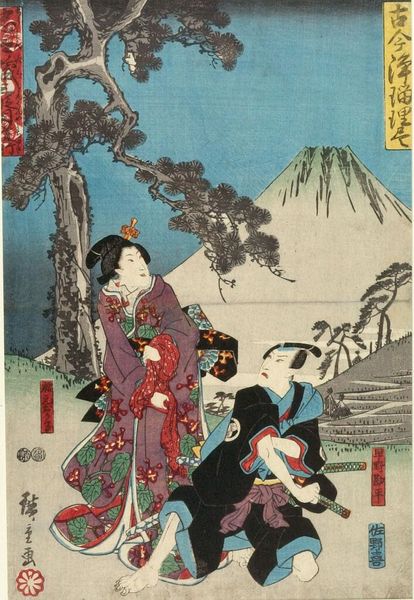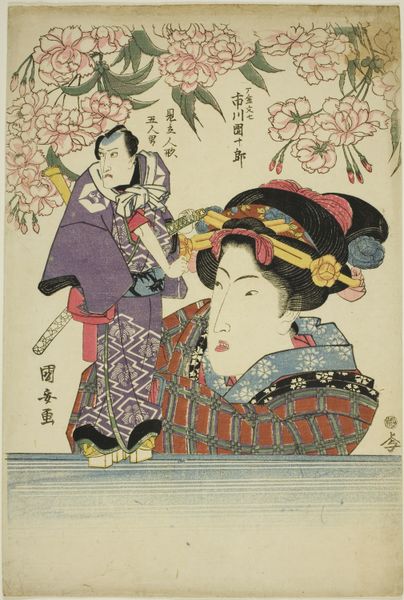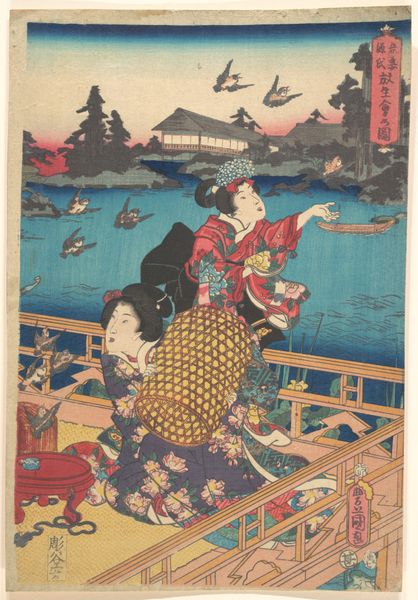
Numazu- The Ashigara Mountains and Numazu Station Possibly 1854 - 1858
0:00
0:00
print, ink, woodblock-print
# print
#
asian-art
#
landscape
#
ukiyo-e
#
japan
#
figuration
#
ink
#
woodblock-print
#
watercolour illustration
#
watercolor
Dimensions: 14 9/16 × 9 13/16 in. (37 × 25 cm) (image, vertical ōban)
Copyright: Public Domain
Curator: Immediately, I'm drawn to the juxtaposition of the mundane with the majestic. Editor: Agreed! The way Utagawa Kunisada places these figures so prominently against the backdrop of Mount Fuji… there’s an interesting tension. What's the historical context of this piece? Curator: This is "Numazu - The Ashigara Mountains and Numazu Station," a woodblock print possibly created between 1854 and 1858. Prints like these were mass-produced, accessible slices of life during the Edo period. It represents not just a landscape, but a connection to the burgeoning commercial and social life made possible by travel infrastructure like the Tokaido road. Editor: That element of access shifts my perspective. The figures become more relatable, and less romanticized, don’t you think? She, kneeling and examining what looks like fabric; he, standing in what might be construed as the more dominant, erect position holding a closed fan with a visible sword; are they meant to present this relationship dynamically, even combatively? Curator: Combative, perhaps not intentionally. These Ukiyo-e prints were often actor portraits or advertisements of famous places. The figures’ prominent placement draws our eye to fashion, popular narratives, and, by extension, to the act of consumption. Numazu station provided resting stops for weary travelers from all classes; what stories were bought, sold, exchanged there? Editor: True. Thinking about identity, who had access to the narrative is as important as the narrative itself. Was this primarily targeted at merchant classes able to travel and consume? Also, Kunisada gives prominence to Mount Fuji; what significance does the location give to these subjects? Curator: Precisely. This print functions as a visual document of a specific time, encoding layers of class, gender, and geography into one frame. As the print moved around, so too would interpretations; its legacy depends not just on who is in the picture, but who is looking at it, and how these interactions shift. Editor: Definitely food for thought. I hadn’t considered it quite that way at first glance! Thanks, Curator, that shifted my viewing perspective considerably. Curator: And thank you, Editor. Analyzing its accessibility also shapes how the legacy is interpreted and what social factors can change how this woodblock print is analyzed and perceived.
Comments
minneapolisinstituteofart almost 2 years ago
⋮
In addition to being a town along the Tokaido Roadway, Numazu was also the setting a famous scene in the Kabuki play, Igagoe. In this play, a traveler named Ju_bei is befriended by a local porter who invites the young man to his home. Through a series of mishaps, it is eventually revealed that the porter's daughter, Oyone, is actually Ju_bei's sister. In this print, Kunisada shows Oyone folding Ju_bei's jacket probably unaware, at this point, that they are siblings. Above, Hiroshige provides a scene of Numazu at the foot of Ashigara Mountain.
Join the conversation
Join millions of artists and users on Artera today and experience the ultimate creative platform.
